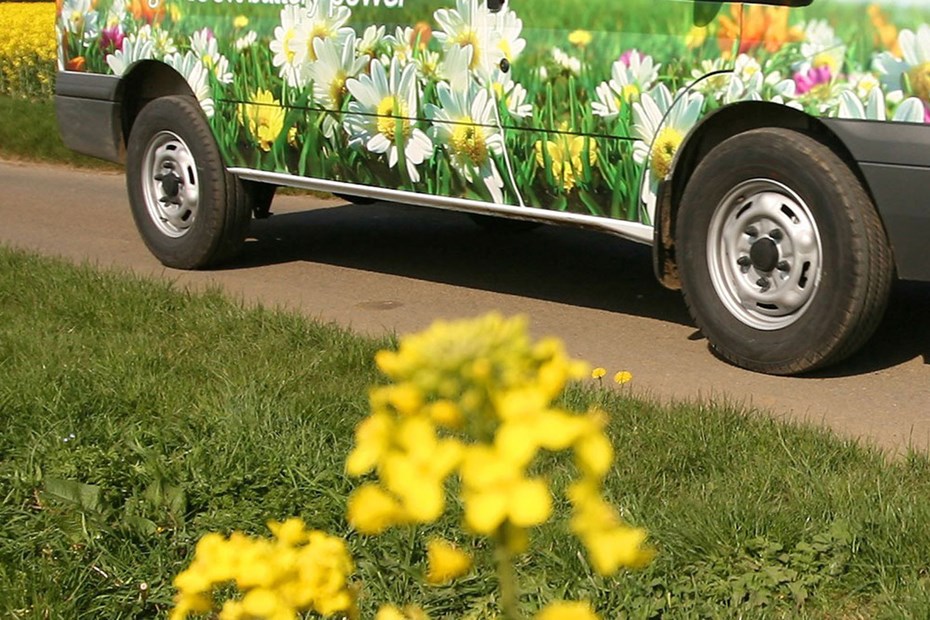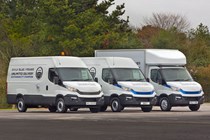This is our simple guide to Euro 6 emissions standards for vans and pickups. On this page we’ll cover the different types of Euro 6 regulations – including Euro 6d-Temp (Euro 6.2), Euro 6d Final (Euro 6.3) and Euro VI – how this compares to Euro 5 and what the future may hold for Euro 7.
The final Euro 6d rules come into force in January 2022. Below you’ll also find a list of all the vans that meet these regulations.
Quickly find the Euro 6 info that interests you:
> When does Euro 7 become law?
> Does Brexit mean the end of Euro 6?
> What’s the difference between Euro 5 and Euro 6?
> Is Euro VI the same as Euro 6?
> List of Euro 6 vans and pickups
What does Euro 6 mean?
Euro 6 is the sixth update to the emissions standards set by the European Commission governing the amount of harmful exhaust gases motor vehicles can emit.
While Euro 6 represents the overall standard, the regulations have been introduced in stages, allowing vehicle manufacturers to get up to speed with meeting them.
When was Euro 6 introduced for vans and pickups?
Euro 6 was originally introduced for light commercial vehicles on 1 September 2016, but there have been several updates since then, all following a year after the equivalent update for cars.
These revisions have targeted vehicle testing more than anything else, but have nonetheless resulted in technical changes to vans and pickups along the way. The most notable being the introduction of AdBlue tanks, part of a Selective Catalytic Reduction (SCR) system that cleans up exhaust gases in order to make it easier to meet emissions requirements.
When did the Euro 6 emissions regulations last change?
In September 2019 the way in which fuel economy is tested changed, making it more realistic and giving van buyers a better idea of the kind of mpg they can actually expect when driving.
The new measure is called the Worldwide Harmonised Light Vehicle Test Procedure (WLTP). From September 2020 this was further refined to include Real Driving Emissions (RDE) testing, which covers a variety of driving on real roads for increased accuracy.
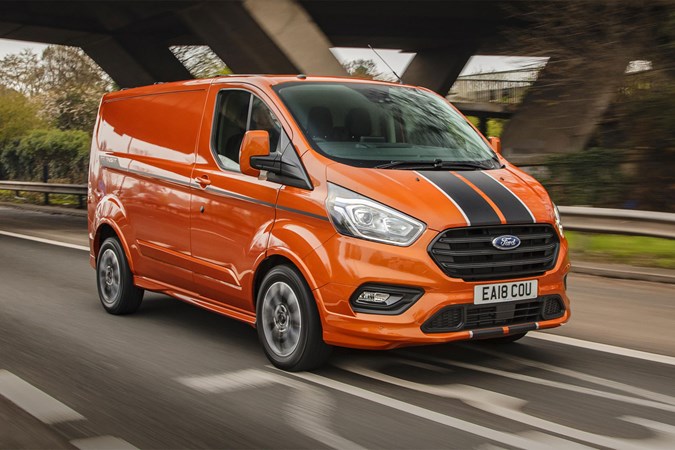
The old system, the New European Driving Cycle (NEDC) test, was entirely based on laboratory testing and often produced figures that couldn’t be achieved on the road in real life.
When comparing van fuel economy do check whether the figures provided are WLTP or NEDC, as some older vans, especially larger ones, are still covered by NEDC testing results. While these may look much more fuel efficient on paper, they are unlikely to deliver on this promise on the road.
There’s another change to the Euro 6 emissions standards coming in January 2022 – the full, final Euro 6d regulations. But this is not as dramatic as the introduction of WLTP and RDE.
What does Euro 6c mean?
If a vehicle is labelled as Euro 6c this means it complies with WLTP regulations. All new vans and pickups had to meet this standard by September 2019.
Euro 6c is the same as Euro 6.1 or EU6.1.
What does Euro 6d-Temp mean?
Euro 6d-Temp is the stage at which RDE fuel economy testing was added to the WLTP mix – the on-road element of the latest fuel efficiency measures, aiming to make mpg figures more realistic.
All vans and pickups had to meet this standard by September 2020.
Euro 6d-Temp is the same as Euro 6.2 or EU6.2.
What does Euro 6d Final mean?
This is the final stage of Euro 6 emissions, also known as Euro 6.3 or EU6.3. This comes into force in January 2022. Wherever we refer to Euro 6d on this page, this is what we mean.
Nothing fundamental changes with the introduction of Euro 6d, but the RDE element of the test is a little stricter so some brands will have had to make a few minor tweaks to ensure their vehicles’ on-road and laboratory fuel economy test performances are more closely matched.
When does Euro 7 become law?
After Euro 6 will eventually come Euro 7, which will ‘probably’ be introduced in 2025. Probably, because at this stage the regulations are still in development.
It’s possible, although not confirmed, that vans will get a year’s grace as they have with the Euro 6 rules, meaning Euro 7 won’t impact them until 2026.
What is highly likely, however, is that Euro 7 will be the last of the emissions regulations that apply to vehicles with petrol or diesel internal combustion engines (ICE). Going by the time cycles of the previous versions, Euro 7 will almost certainly take us through to the point at which new vehicles will be zero emissions only.
Again, no fixed timescale for this yet, but 2030 seems to be a good bet.
>> Worried about future emissions regulations? Dodge that bullet by buying an electric van
Does Brexit mean the end of Euro 6?
Now that the UK has officially left the European Union it is not bound to the same rules as before. However, given that vehicle makers are selling to more countries than just the UK and the market is not big enough to justify making big changes just for us. Expect things to remain exactly as they are.
How does Euro 6 compare with Euro 5?
The previous Euro 5 (EU5) emissions standards were focused primarily on carbon dioxide emissions (CO2).
Euro 6 is targeting nitrogen oxide (NOx) emissions. But it also aims to reduce sulphur dioxide, carbon monoxide, hydrocarbon, and diesel particulate matter emissions, as well as CO2.
What does Euro VI mean and is it the same as Euro 6?
Confusingly, Euro VI is something different to Euro 6, referring to the emissions testing regime for ‘heavy duty’ vehicles.
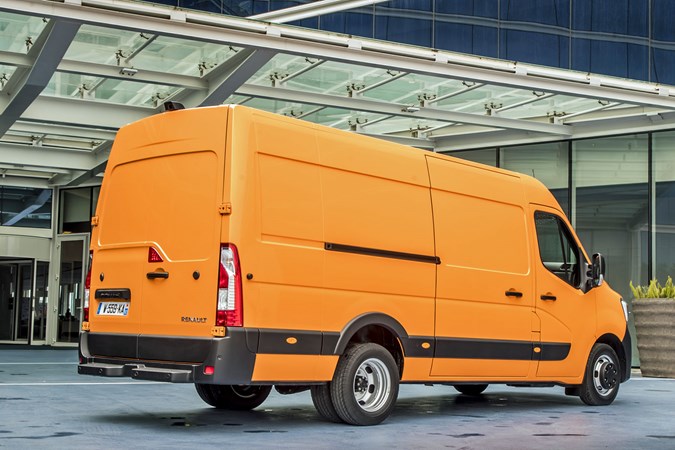
Vans that have a ‘reference mass’ (the unladen weight plus 25kg) of 2,380kg can be made eligible for Euro VI emissions testing rather than Euro 6 testing, and are subsequently labelled heavy duty.
Vans tested under Euro 6 and its various developments are known as ‘light duty’ vehicles.
Is there an advantage to Euro VI vans versus Euro 6 vans?
Heavy duty vehicles don’t have to go through WLTP testing (yet), but light duty ones do, which means heavy duty models may require less sophisticated emissions control technology.
This may reduce costs, improve fuel economy or even increase payload. But could make Euro VI vehicles subject to future restrictions that Euro 6 vehicles are not.
Because of the crossover in weights, there are vehicles that could be eligible for either heavy-duty emissions testing or light-duty emissions testing.
The original buyer of the vehicle is the one that chooses, so going forward when looking at used vans you’ll have to check the documentation even more carefully to make sure you know exactly what you’re buying.
Van conversions and WLTP
WLTP is so concerned about accuracy that it demands specific fuel economy and emissions figures for every version of a vehicle where this may differ – including where variations in standard and optional equipment might impact these.
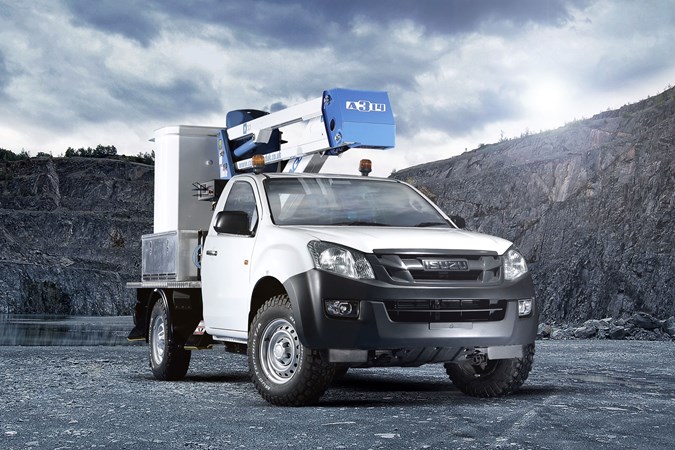
This sounds like it might be a major problem for the van and pickup conversion market, given the wide variety of conversions that are out there. Especially as the original manufacturer – which might not have very much to do with the conversion process at all – remains ultimately responsible for ensuring that the vehicle that bears its badge conforms.
To solve this problem, manufacturers provide WLTP calculators to their converter partners so that they can compute an official mpg rating, whether the vehicle in question has a refrigeration unit or a flatbed on the back.
Does Euro 6 reduce payload?
Any additional technology generally comes with a weight penalty, and exhaust-gas cleaning AdBlue and SCR technology is no exception. The more a van weighs the less room there is for payload within its legal gross vehicle weight (GVW).
However, the more time that passes since the arrival of Euro 6 legislation, the more vehicles change and the harder it is to ascribe a change in payload to the emissions requirements. Most models would have had some fairly notable changes to their spec or engines by now, regardless of the emissions requirements.
So it’s difficult to make a like-for-like comparison.
Are there any advantages to Euro 6 for vans and pickups?
The move to Euro 6 increased engine efficiency – which typically means better fuel economy (though not always) – and most updates have brought about more engine power, too. The latest round of requirements mean that the on-road efficiency should be better, while the official mpg figures should be ones that can be taken as more representative in the real world.
Euro 6 also reduces CO2 emissions, helping to decrease the carbon footprint of companies with large fleets – which can help with taxation.
Similarly, should the Government ever choose to move LCVs onto a CO2-based road tax system from the current fixed rate, owner-drivers will also benefit from lower CO2 vehicles
Do I need to have my current van or pickup modified to meet Euro 6 legislation?
No, it only applies to the vehicle at the point at which it is sold for the first time.
What is AdBlue?
AdBlue is the most recognised name for the exhaust fluid used in SCR emissions control technology. Added to a special extra tank in compatible vehicles in a process that’s as simple as topping up the windscreen washer reservoir, this fluid is used to break down NOx into less harmful nitrogen and water vapour.
Prices vary, but AdBlue costs around £8-£20 a litre (buy in bulk to make it cheaper) and can be purchased from service stations, truckstops, dealerships and motorfactors like Halfords..
Are all new vans now Euro 6d compliant?
As of January 2022, they should be. However, manufacturers are traditionally allowed to stretch the boundaries of deadlines in order to sell off any stock that they have left over that doesn’t meet any new legislation. This means that you would normally be able to buy a pre-Euro 6d van after the deadline, essentially as a new vehicle.
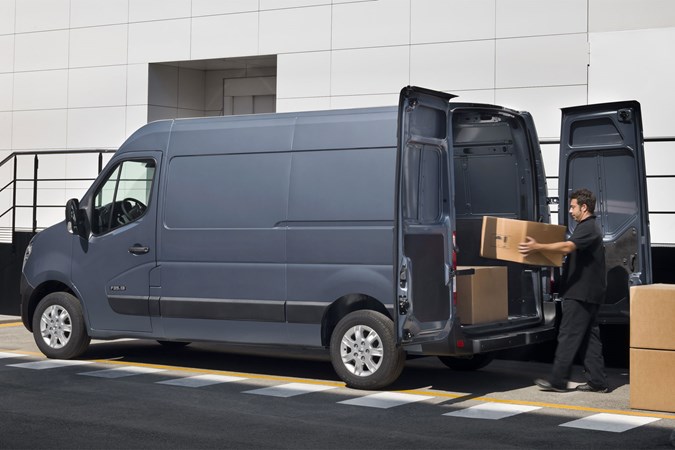
However, there is still some uncertainty on exactly what will be allowed, and the Retail Motor Industry Federation (RMI) is seeking further clarity on this issue.
More significantly, the current stock shortages that manufacturers are experiencing due to the semi-conductor crisis could render concerns about this irrelevant.
The carry-over allowance (or derogation, to give it its proper name) is normally used to get rid of excess stock. With demand presently exceeding supply in the world of vans and cars, excess stock is a rarity at the moment, so van makers might well not have any leftover vehicles anyway.
Which van and pickups meet the latest Euro 6 emissions standards?
Below is a list of all the major van and pickup manufacturers and how they’re dealing with the latest Euro 6 regulations.
Dacia
The Dacia Duster Commercial is based on a passenger car, putting it well ahead of the game as far as Euro 6 emissions regulations for vans are concerned.
Ford
Ford has updated its entire range of models already, which has resulted in some engine options being dropped from some models but does mean any new Transit, Transit Custom, Transit Connect, Transit Courier or Ranger pickup purchased now will meet Euro 6d.
Isuzu
The latest 1.9-litre Isuzu D-Max engine, which was last updated in 2020, is fully Euro 6d complaint so the whole range meets the latest standards.
Iveco
The Iveco Daily is fully Euro 6d-Temp compliant, and was in fact the first van to go through the RDE process back in 2017, when the Blue Power models were launched.
The Euro 6d Final upgrade comes as part of the MY22 update, which is set to start arriving in the UK before the end of 2021. Though some older models expected to remain on sale into 2022, this shouldn’t stretch too far into the year.
Land Rover
As the Discovery Commercial and Defender Hard Top are modified passenger cars, they already meet passenger car rules, making them fully compliant with the latest Euro 6 regulations.
MAN
With the MAN TGE being basically the same as the VW Crafter, it is set to largely mirror the Volkswagen. The rear-wheel-drive model isn’t available under Euro 6d but is instead offered as a heavy-duty Euro VI vehicle only.
Maxus
The last order of a Maxus Euro 6d-Temp van was 16 June 2021 while all orders from 5 November 2021 onwards will be Euro 6d, so every Maxus Deliver 9 will be compliant with the regulations in 2022.
Mercedes-Benz
Mercedes has confirmed that its Sprinter and Vito models are compliant with Euro 6d. An all-new Citan goes on sale in 2022 and is also Euro 6d ready.
Mitsubishi
Because Mitsubishi has left the UK market, none of the vehicles originally offered in this country will have made it to Euro 6d – Euro 6d-Temp is as far as it got.
Nissan
The Navara pickup is no longer offered for sale in the UK and the most recent update took it to Euro 6D-Temp compliance.
As for the vans, the latest Townstar, Interstar and Primastar models are all being launched with a fully compliant Euro 6d engine range.
Renault
The all-new Kangoo is due to arrive in 2022 and will be bang up to date with the regulations when it does, and the recently updated Trafic is already there. The Master has had a minor tweak to its engine line-up to ensure it meets the requirements, too, with all models sold from September 2021 making the grade
Stellantis – Citroen, Fiat, Peugeot, Vauxhall
Every model from these brands will meet the new regulations by the time they become law in 2022 – and most of them are already compliant.
Toyota
As the Proace and Proace City are both based on Stellantis vans they too are now already Euro 6d compliant. The Hilux pickup has been up to speed since the revised model was launched in late 2020, including the more powerful 2.8-litre engine, while the Land Cruiser Commercial is based on a passenger vehicle and also already meets the latest regulations.
Volkswagen
All models in the VW line up are now ok for Euro 6d. The one model that didn’t match up was the rear-wheel-drive Crafter, but this is not currently available for ordering. It will return in 2022, although the precise timing for this is not yet confirmed.
Also read:
>> Van and pickup speed limits explained



